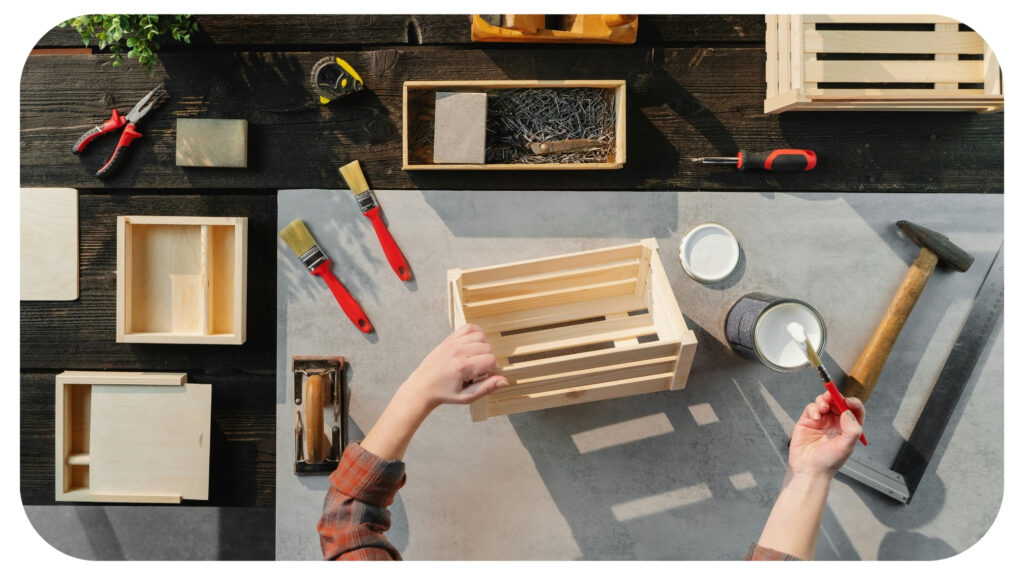Innovative Ways to Use Reclaimed Materials in Home Renovations

When the standard cookie-cutter home décor and renovation looks are feeling tired, exploring a more fresh and sustainable aesthetic can transform a living space. Using reclaimed materials has become a practical, eco-friendly solution that’s gaining momentum in home renovations and remodeling.
From salvaged wood to vintage fixtures, these materials bring unique charm and reduce your environmental footprint. Exploring innovative ideas for incorporating reclaimed materials into your renovation that offers both style and sustainability expands the transformational possibilities of your living space.
Understanding Reclaimed Materials
Reclaimed materials bring a unique blend of history and sustainability to home renovations. Using these repurposed items not only adds character to your home but also serves as an eco-friendly choice. Understanding reclaimed materials is the first step toward making your home renovation both stylish and green.
Using reclaimed materials significantly reduces the need for new raw materials, which in turn lowers your carbon footprint. Trees aren’t cut down, and fewer resources are used in manufacturing. Less waste ends up in landfills, making this an eco-friendly renovation choice. Often, reclaimed materials can be more cost-effective than new ones. Many salvage yards and second-hand shops offer these materials at a fraction of the cost. Using reclaimed items can often increase the value of your home, making it a wise investment.
“Who doesn’t love a unique home,” says home decorator, Ramsey Bearse. “Reclaimed materials bring a rich history and story to your renovation. Whether it’s an old barn door repurposed as a dining table or antique bricks used for a rustic fireplace, these materials add an unmatched charm and uniqueness to your space.”
Innovative Uses for Reclaimed Materials in Home Renovations
Reclaimed materials offer an eco-friendly approach to creating unique spaces. Reclaimed wood is a fantastic choice for both flooring and structural beams. It brings a sense of history and charm that new wood simply can’t match. Whether sourced from old barns, factories, or even wine barrels, this wood has a story to tell.
Antique doors and windows can give your home renovation that extra touch of character and historic charm. Their distressed look and intricate designs can’t be replicated by modern materials. Upcycled furniture and decor made from reclaimed materials can bring a unique, trendy feel to your home. Plus, it’s a fantastic way to reduce waste and make your renovation more sustainable.
Think about repurposing old wood, metal, and other materials into new, stylish furniture. An old door can become a stunning dining table. Wooden crates can transform into chic storage units or coffee tables. Small decor items made from reclaimed materials can make big statements. Use old picture frames, reclaimed wood signs, or even vintage hardware to create eye-catching pieces. They not only add personality to your space but also reduce the need for new, mass-produced items.
By incorporating these innovative uses for reclaimed materials into your home renovation, you can create a space that is both stylish and sustainable. From reclaimed wood flooring and beams to vintage doors and windows, and upcycled furniture and decor, each choice you make contributes to a greener planet while adding unique elements to your home.
Eco-Friendly Renovation Tips
Renovating your home with a focus on sustainability can greatly reduce your environmental impact. Energy-efficient upgrades are a smart way to reduce your home’s energy consumption and save on utility bills. Energy-efficient appliances and systems are beneficial for the environment but also for your wallet. These upgrades can lead to significant reductions in electricity and water usage, decreasing your overall energy bills.
Incorporating sustainable building practices into your renovation can significantly reduce the environmental impact. Volatile organic compounds (VOCs) are harmful chemicals found in many traditional paints. They can cause indoor air pollution, posing health risks like headaches and respiratory issues. Choosing low-VOC paints reduces these risks, ensuring better indoor air quality and a healthier home environment.
Insulation is crucial for energy efficiency, but traditional materials can be harmful to the environment. Recycled insulation materials, such as cellulose made from recycled newspaper or denim, offer an eco-friendly alternative. These materials are effective, safe, and often have better thermal performance.
By adopting these sustainable building practices, you not only create a healthier living space but also contribute positively to the environment. Each choice you make, from the paint on your walls to the insulation in your attic, can make a significant difference in your home’s overall eco-friendliness.
Challenges and Solutions in Using Reclaimed Materials
Using reclaimed materials in home renovations presents a unique set of challenges. From ensuring the quality and safety of materials to overcoming supply constraints, each hurdle requires thoughtful solutions. By addressing these issues head-on, you can successfully incorporate reclaimed materials into your project.
Ensuring the quality and safety of reclaimed materials is crucial. Damaged or contaminated materials can pose significant risks. By being diligent about quality and safety, you can make sure your reclaimed materials are both beautiful and reliable.
Finding enough reclaimed materials to complete your renovation project can be challenging. Don’t limit yourself to local salvage yards. Online marketplaces like Craigslist, eBay, and Etsy offer a vast array of reclaimed materials. Also, check local buy-and-sell groups on social media platforms.
Local contractors often have access to reclaimed materials from previous jobs. Building a relationship with contractors can provide you with a steady supply of high-quality items. Knowing what materials you need well in advance allows you to collect them over time. This approach helps you avoid last-minute scrambles and ensures you can find the perfect pieces for your project.
Sometimes, what you find may not be exactly what you envisioned, but being open to creative solutions can lead to even more unique outcomes. For example, if you can’t find three matching reclaimed windows, consider using different-sized windows as a charming eclectic feature.
Think outside the box. Old barns, factories, and even shipping containers can be excellent sources of reclaimed wood and metal. Also, keep an eye on demolition sites where materials are often available for free or at a low cost.
By adopting a proactive approach and leveraging various sources, you can overcome supply constraints and find the reclaimed materials you need to bring your renovation vision to life. Embrace the shift towards eco-friendly home renovations by incorporating reclaimed materials. These sustainable options not only add character and history to your space but also contribute to a healthier planet.
Starting your journey with reclaimed materials today paves the way for future innovations in sustainable living. Your choices inspire change and lead the charge in making eco-friendly renovations the standard, not the exception. Keep exploring, stay inventive, and watch how your unique, green home influences the way we all think about sustainability and design.
Recommended For You
How to Choose a Cleaning Company
Most Inside
Most Inside offers high-quality recommendations and valuable updates to enhance all aspects of your life, providing premium guidance and enriching experiences.




